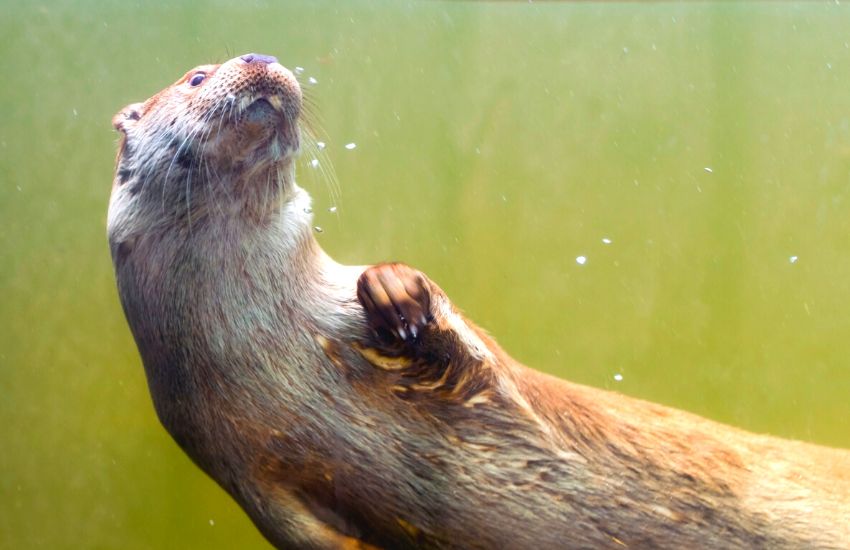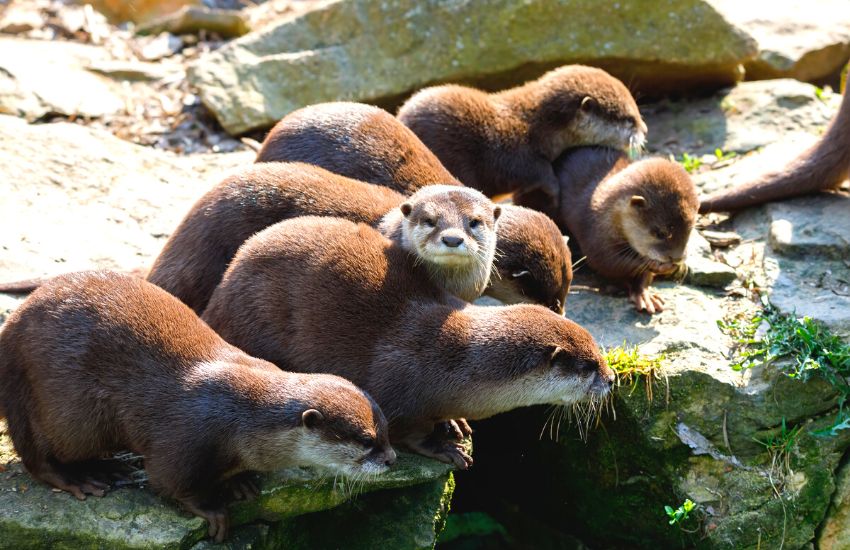shelter pets in need
Each order helps pets in need

Nothing brights up a day more than looking at a picture of a cute otter, and we’re here to satiate this need among our readers! Read on to learn more information regarding this beloved
Otters are some of the cutest aquatic mammals, and no debates are allowed. They’re part of the Mustelidae family, along with skunks, ferrets, and badgers.
These
They are also very long, typically up to five feet long. They also have this noticeably thick and fluffy fur, which traps the air around them. It acts as an insulator to keep them warm as they swim.
Their color can range from dark browns to light tans, adding to the charm of this peculiar animal. They’re also very soft to the touch (which is allowed in some aquatic shows).
While their looks are undoubtedly one of their greatest strengths, their cuteness doesn’t end there. Otters also have some distinctive behaviors which make their adorableness stand out from the rabble of the animal kingdom.
After all, who doesn’t get mesmerized watching one of these tiny being sliding down a slope using their belly and claws? They’re also very vocal, using chirps, yells, and whistles to communicate.
Otters are also very sociable. They especially love grooming others of their kind as a bonding ritual.

It’s impossible to deny the popularity of otters among the public. Just look at all the otter-related media on the internet, from memes to webcomics, pictures to videos…it’s not clear how everyone adores these guys!
Beyond their cuteness, however, is their cultural significance to certain countries. For example, China and Japan usually view otters as a symbol of luck and prosperity.
Otters also feature prominently in some Native American mythology and legends. The Mi’kmaq, in particular, believes in the existence of a trickster animal named Keoonik, who often appears as an otter to deceive other animals of the forest.
While many Native American cultures treat otters as a symbol of luck, certain tribes, such as those in British Columbia or the Alaskan coast, associate river otters with ghosts and drowning. Eating them is also considered taboo (although the same rule doesn’t apply to sea otters).
Now that we’ve discussed a bit of their history and cuteness, it’s time to learn more about the practical use of these animals. Otters play a vital role in their ecosystem, the ecological roles of which are listed as follows.
Otters are considered a keystone species by many wildlife experts. Keystone species are called such because their existence directly influences their ecosystem.
In the case of otters, their presence is often necessary due to the pressure they exert upon prey species such as sea urchins, clams, or fish. Their disappearance would mean an overabundance of other species, which can potentially destroy an entire ecosystem by removing the balance among resources.
The presence of otters is typically an easy sign for scientists to consider marine environment health. Since these
Otters are also considered helpers in the fight against climate change due to the protection they provide to kelps. They protect these plants from being overharvested by smaller water animals.
Otters help maintain shoreline health by feeding on many aquatic critters that live near the shore. Culling the population of these species helps prevent beaches from looking like cluttered messes.

Unfortunately for these amazing mammals, otters suffer from a population drop due to pollution. They were also nearly hunted to extinction due to the high demand for their furs.
Fortunately, conservation efforts and reintroduction programs are constantly underway to keep the remaining thirteen species of otters alive. You can also contribute to the cause by doing the following tips:
Try to avoid seafood that is unethically sourced, such as those pulled from the oceans. Unsustainable fishing practices are linked to the reduced otter population, and you can reduce demand for this activity by buying only from responsible sources.
Try finding a local wildlife sanctuary that helps support research and conservation for these animals. Committing to volunteer work provides more chances of survival for these wonderful otters.
Alternatively, you can donate to organizations such as the World Wildlife Fund or the Sea Otter Conservation Fund. These groups are dedicated to saving otters and their habitats worldwide.
What’s knowledge if you can’t share it? Be vocal about your beliefs and raise awareness for these cute otters. Host events about the topic, such as reading circles or others.
If you’re feeling too shy to do this step, then you can take it slow and share some helpful articles from your social media platforms—every little piece of visibility matters for these animals.
Provide more of your support to animals that need help by wearing one of our rescue tees. We ensure that 25% of the proceeds are donated to no-kill animal shelters.
Wild otters generally like to keep their distance away from humans, so in that sense, they may be considered unfriendly. However, they also aren’t known for being hostile or aggressive either.
Most otters are solitary creatures, with affectionate behavior usually centered only between a mother and her pups.
The best places to spot otters are in the wild, and there are many places in the United States where you might spot these majestic
Leave a comment